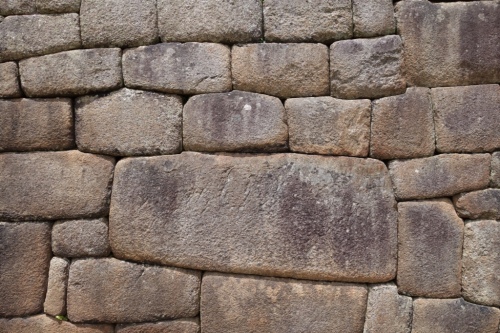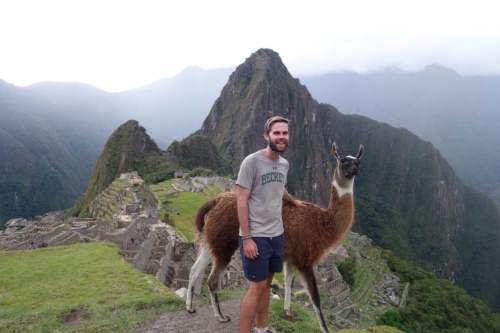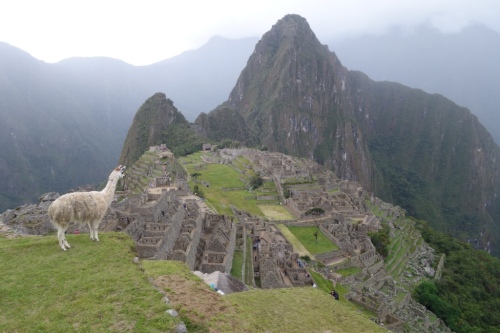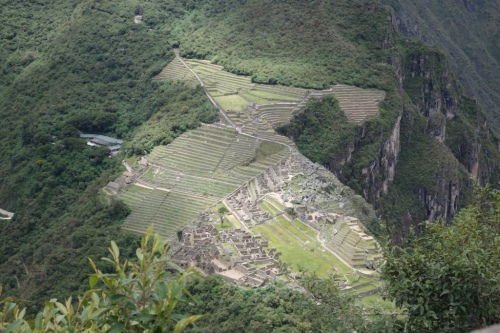As arguably the biggest tourist magnet in South America, and one of the most prolific bucket-list members the world over, Machu Picchu (or Machupicchu) hardly needs much of an introduction. I’m sure you’re also much more interested in my photos from the big day, and less so in the three days between Cusco and the old city. These two things being what they are, below are some photos of the amazing day I spent exploring the city which still has some little mysteries and the three days of Inca Jungle hike to get there. In that order. Also, llamas.
Despite Machu Picchu’s popularity there is surprisingly little information about the various ways to get there. I guess the tour agencies in Cusco want to keep the traffic coming through their doors. Nevertheless there are definitely ways to see the city without destroying your budget, without a guide, and without walking at all. For instance instead of taking the train it’s possible to take a series of collectivos and micro-busses from town to town in the Sacred Valley and arrive in Aguas Calientes, or combine some of those with a short train journey, and not blow your budget or time.
I chose the Inca Jungle multi-day hike because I wanted some hiking without the intensity of the Salkantay trek. The famous Inca Trail was closed, being February and the wet season in Perú – which actually worked to our favour, because there were far less people than I expected at Machu Picchu.
Day one starts in Cusco and ends in Santa Maria. The main activity is a 50km downhill cycle on a winding road. We started in the clouds at 4,200m and zoomed down to the town, stopping along the way to admire the incredible views without risking a tumble off the edge. It was kind of like Death Road without the Death bit.
At the end of this day there’s an optional river rafting outing. It wasn’t offered to us because the river was too high in wet season – walking past it the next day, nobody in our group complained.
Day two is a nine hour hike from Santa Maria to Santa Theresa. The first half of the day involves some steady uphill and is mostly through lush green cloud forest. We passed through coffee trees and corn fields, stopping at two houses with monkeys. At the second we learned about the importance of coffee farming to the Sacred Valley region and sampled delicious raw chocolate and fresh coffee. Some (myself included) tasted a local spirit direct from the bottle below. Did not taste scaly, did taste vaguely like aniseed.
We walked along an (not the) Inca trail used to run messages and supplies from the coast all the way to Machu Picchu by a series of athletic young men called Chasquis. Towards the end of the day there is a “cable car”, really just a reinforced platform, used to ferry people high over the raging river. Our guide was a bit of a nutter, as you can see from the photo above.
After this it’s a short walk to the Santa Theresa hot springs, where we splashed around until after sunset. Then another walk or taxi to the town where we stayed the night. Here our mistake was getting hammered on cheap rum and staying up until 3am had come and gone. The first day was a pretty easy walk – a nine hour day all up, but that included a whole bunch of descansas (rest stops) and lunch, not to mention monkeying around and stopping for coffee on the climb.
The next morning most of our group did the second optional activity, ziplining. The reports came back that it was “pretty fun” and “yeah not bad”, so I’m happy I decided not to spend $35 and save ziplining for Baños or Mindo, both in Ecuador. Instead we others walked three hours on mostly flat ground through a gaping valley. It was probably harder than the previous day owing to the pounding hangover I had inflicted on myself.
Eventually we reached Hidroelectrica and napped after lunch. Our zipliners caught up and we walked another three hours down the railroad tracks between Hidroeletrica and Aguas Calientes, or Machupicchu Pueblo as it was renamed recently (no doubt for the tourists). It’s a nice enough little town full of restaurants, bars, hostels, and travel agencies. It’s super touristy though so one night is more than enough – we went for dinner then straight to bed.
Four in the morning saw us out of bed and ready to walk up the mountain to Machu Picchu. Eleven hundred steps later, the sun was just starting to break through the thick morning fog and we had made it. We spent the next 10 hours walking around exploring the city thankfully hidden from Spanish invaders, and all but lost from memory during the subsequent decline of the Inca empire in the 16th century. Rediscovered by Hiram Bingham almost 400 years later, then pillaged and burned for clearing by him a few years later, the mysteries of its origins and purpose still entertain historians in tin-foil hats. My favourite is the ancient alien theory.
Whatever theory you subscribe to, Machu Picchu is a beautiful example of why Inca architecture earned them the title of Master Builders. The impossibility of recreating the solid, seamless constructions with rudimentary tools and no mortar today – at least without a prodigious team of engineers – and the interplay with the natural landscape, like building roofs matching the angle of the hills behind, is just so damn impressive. It’s no wonder this wonder attracts upwards of two million tourists a year – just remember to take care of the landscape and leave the city exactly how you found it. Environmental degradation and theft of pieces of rock are real problems there today, and I want my kids to travel there one day.
Here’s a photo of tourists in ponchos at 4.30am.



























Pingback: La Prisa Mata | Beard Abroad
Pingback: Head in the Clouds | Beard Abroad